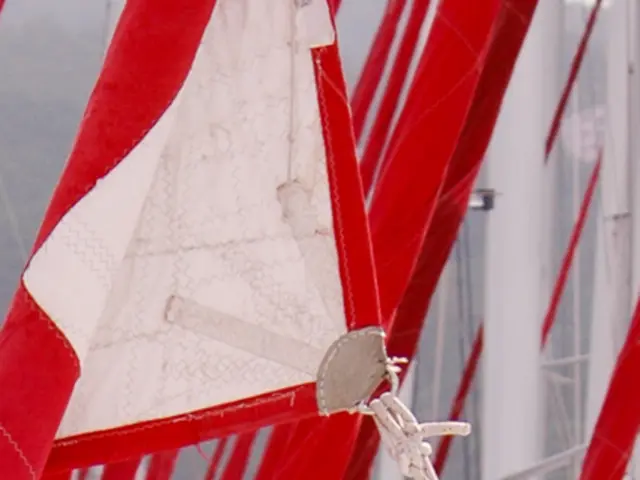Putin adopts a particular approach in Ukraine's affairs
Let's Decode Putin's Move: Why the Delayed Ceasefire in Ukraine?
Donald Trump recently shook things up by suggesting a ceasefire in Ukraine within two weeks or less, putting the heat on Putin. Now,Putin's got his own plan in play – announcing a three-day ceasefire that's still two weeks away. But what's this all about? Is Putin playing for time, or is there more to this tactical move?
Time on His Side
Some experts suggest Putin is playing a cunning game, as Ukraine has been ready for an unconditional ceasefire for 50 days straight. Still, Putin has rejected this offer, all the while continuing the fighting.
Betting on Victory Day
Another factor at play is May 9th, a significant date for Russia. Known as Victory Day, it commemorates Germany's surrender in World War II, and the Kremlin's hoping to pull off another win this year by using this day strategically.
Contested Territories
Russia's Foreign Minister Lavrov has made it clear that Russia wants "international recognition of its ownership" of Crimea and four Ukrainian regions that were annexed in 2022. The US has responded by offering "legal" recognition of Crimea, but not the other regions.
The Power of Symbolism
Putin's move to tie the ceasefire to a patriotic day like Victory Day is no accident. Doing so helps bolster Russia's image as the peacemaker on the international stage, especially when foreign dignitaries will be in town for the celebrations. It's all about maximizing Russia's public relations and creating a propaganda opportunity.
Moreover, this ceasefire maneuver allows Putin to apply diplomatic pressure on Ukraine and the West. By setting the ceasefire during a symbolic event, he can create an expectation that Ukraine should follow suit, avoiding being seen as uncooperative peacemakers.
Ongoing Disputes over Crimea and Eastern Ukraine
These conflicts revolve around two critical areas: Crimea, which Russia seized in 2014, and eastern Ukraine, where Russian-backed separatists have been waging war on Ukraine for years. The solutions to these ongoing disputes are crucial for any negotiations that might lead to a lasting ceasefire or peace agreement. Putin's ceasefire demands are accompanied by broader political demands, including Ukraine's demilitarization and denazification, as well as an end to Western arms supplies to Ukraine.
In short, Putin's three-day ceasefire, which is still weeks away, is a complex mix of politics, propaganda, and military strategy. By tying the ceasefire to Victory Day, Putin aims to strengthen Russia's image, create diplomatic pressure, and give Russian forces time to regroup before any potential deal could be struck. It's a game of chess in which Putin seems to be very much in control.
- Putin's proposing of a three-day ceasefire, delayed by two weeks, seems to be a strategic move in the ongoing war-and-conflicts in Ukraine, as suggested by some experts.
- Despite Ukraine being ready for an unconditional ceasefire for 50 days, Putin has rejected the offer, possibly aiming to delaying any resolution in his favor.
- As Victory Day, a significant date for Russia, approaches on May 9th, Putin may be betting on this symbolic day to bolster Russia's image as a peacemaker in global politics.
- In addition to the ceasefire, Putin's broader political demands include Ukraine's demilitarization, denazification, and an end to Western arms supplies, making the negotiations surrounding the ongoing disputes over Crimea and Eastern Ukraine exceedingly complex.







